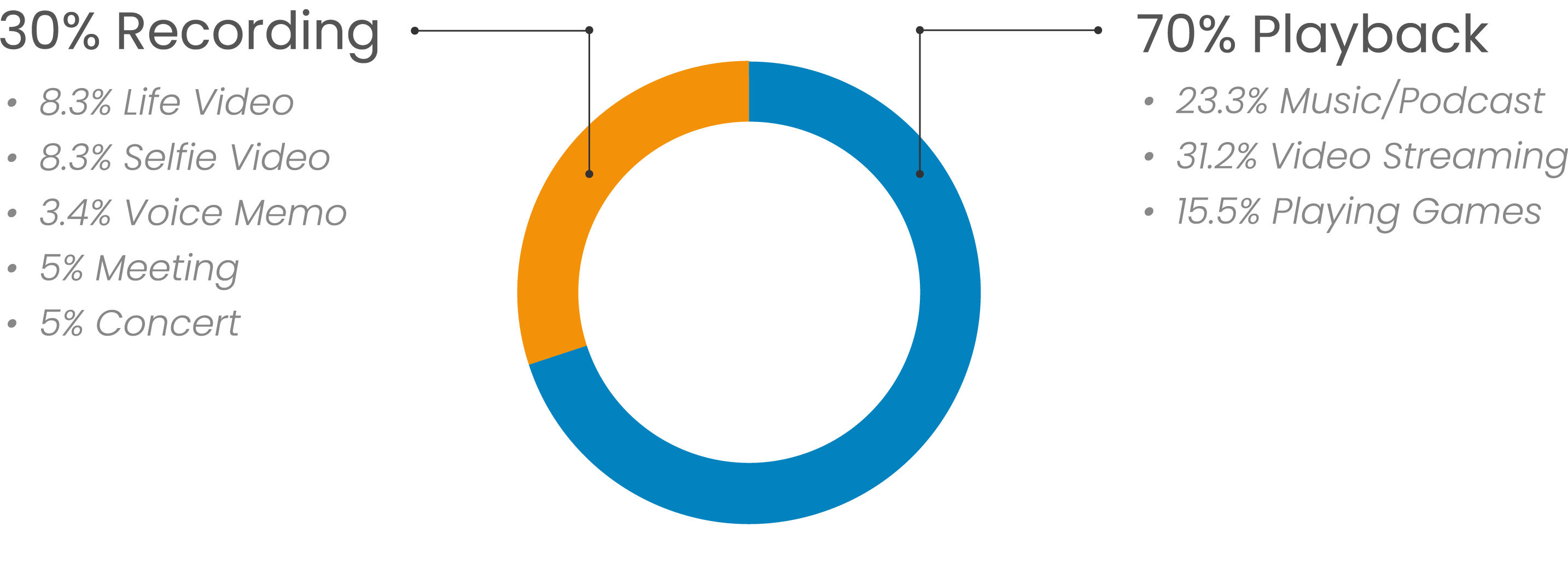Playback 70%
We measure the playback performance on the 3 most common use cases, as well as on a total of 5 technical attributes.
Technical attributes evaluated :
-
- Timbre: Evaluates the ability to render the correct frequency output according to the use case and user’s expectations, looking at bass, midrange, and treble frequencies as well as the tonal balance among them. A good tonal balance consists in an even distribution of these frequencies
- Spatial: Evaluates the ability to render a virtual sound scene truthful to reality. A good spatial performance means to be able to accurately place an instrument in or an explosion in a movie.
- Dynamics: Covers a device’s ability to render loudness variations and to convey punch as well as clear attack and bass precision.
- Volume: Evaluates the sound pressure levels at various volume settings to determine the minimum and the maximum volume as well as volume consistency.
- Artifacts: Evaluates the presence of accidental or unwanted sounds, resulting from a device’s design or tuning.
Use cases evaluated :
Watching Videos
We evaluate the device’s capability to render a scene and be in line with the original track in various types of movies. For such usage, our experts are particularly looking at the following attributes and device capabilities:
-
- Timbre: expecting a correct tonal balance with precise and sharp bass rendition in line with the original track
- Spatial: A wide stereo scene as well as centered voices
Listening to Music
We evaluate whether musical content is delivered in line with the master recording. For such usage, our experts are particularly looking at the following attributes and device capabilities:
-
- Timbre: looking for a correct tonal balance in line with the original track
- Dynamics: A sharp and precise attack
- Spatial: Wideness in line with the original track
Gaming
We evaluate if the device offers an immersive audio experience. For such usage, our experts are particularly looking at the following attributes and device capabilities:
-
- Spatial: looking for a good spatiality, allowing users to recognize where sounds are coming from, which is crucial in the gaming experience
- Timbre: A correct tonal balance
- Artifacts: A good management of artifacts like no possibility to occlude the speakers with the hands while gaming



